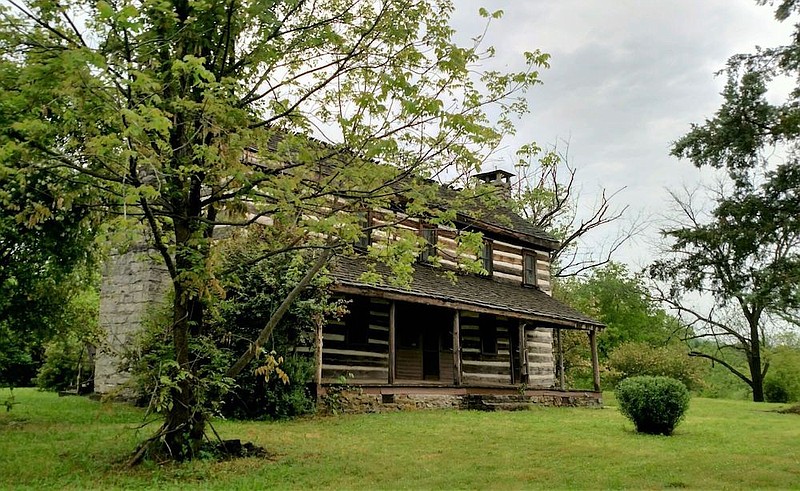The John Brown House is an early 19th-century log building on the south side of the Tennessee River in Lookout Valley. It is located one mile south of the site of the ferry Brown operated and which is named for him. Although there are no written records proving Brown operated a tavern in his house, the structure is commonly known as Brown's Tavern.
One of the myths about John Brown is that he and his family traveled to Oklahoma on the 1838-39 Trail of Tears, then moved back to Lookout Valley. This is not true. Brown does not appear on surviving detachment lists or spoliation claims used by researchers to learn who made the grueling journey. So, what did happen to the Browns during the Cherokee Removal?
Brown owned a reservation on Moccasin Bend until he sold it to William and Ephraim Hixson in 1830. That same year, the Hixson family stole control of the ferry from Brown, then burned a cabin used by Brown's ferryman several months later. It is not clear where the Browns moved immediately after the sale of their Moccasin Bend farm, but a document shows the Browns were living in Georgia when the state conducted lotteries to give away their lands.
The 1835 Cherokee census shows the Browns moved back to Tennessee and lived in Lookout Valley on 79 acres. The Cherokee valuations conducted in 1836 describe the house we know today as Brown's Tavern as sitting on 110 acres. Valued at $1,200, it was a 50-foot, hewed log house with two stone chimneys, detached kitchen, various outbuildings, and an orchard with apple, cherry, peach and pear trees.
In December 1836, an officer ordered to the area to facilitate the Cherokee Removal, Major John P. Delaney, intervened on behalf of Brown to evict Michael P. Light from a cabin owned by Brown. In June 1838, the Browns were still living in their house on Brown's Ferry Road when the Whitely detachment of emigrating Cherokees camped near the ferry after departing Ross's Landing by water. Later that year, the Drane and Bell detachments of Cherokees crossed the Tennessee River at Brown's Ferry on the Trail of Tears.
The 1839 Ocoee District land records show that Brown remained in Hamilton County and continued his land speculation activities. Also, a claim filed by Elizabeth Brown in 1846 contains a deposition by Benjamin B. Cannon, Circuit Court clerk of Hamilton County and a Trail of Tears detachment leader, that states John Brown made some arrangements to move west but never did because he wanted to become a U.S. citizen and was engaged in lawsuits that he wished to see finished. These included lawsuits against the Hixsons that made their way to the Tennessee Supreme Court. Brown had applied for citizenship as early as 1835, but it was never granted.
When Brown's widow, Betsey, applied for military bounty land because of John's service during the War of 1812, she stated that John died at Lookout Mountain on Jan. 8 or 9, 1840. One story claims Brown is buried behind his house in a mound with cedar trees. All we really know with certainty is what his widow stated in her deposition - that he died near Lookout Mountain.
Shortly after John's death, family friend John Ross encouraged Betsey and her children to emigrate to Indian Territory. Betsey traveled to Indian Territory in 1842 but returned to Tennessee for several more years to act as administratrix of John's estate and to continue to pursue the lawsuits against the Hixsons. An emigration list in the National Archives and Cherokee Nation Supreme Court records suggest Betsey moved to Oklahoma in 1848 or 1849 with her son's family. Records from 1851 show Betsey was living in the Skin Bayou District, present-day Sequoyah County, Oklahoma.
Today, the John Brown house is a certified site on the Trail of Tears National Historic Trail. It is a reminder of a mixed-blood Cherokee man who was a ferry owner, river pilot, land speculator, mill owner, slave owner and veteran of the War of 1812. Despite being a veteran of the United States military, Brown fell victim to Euro-American greed that claimed his ferry and his home in Georgia. The Brown house is also a witness structure to injustice suffered by Cherokees on the Trail of Tears.
Vicki Rozema, Ph.D., is president of the Tennessee chapter of the Trail of Tears Association and a national director for the association. For more, visit chattahistoricalassn.org.
